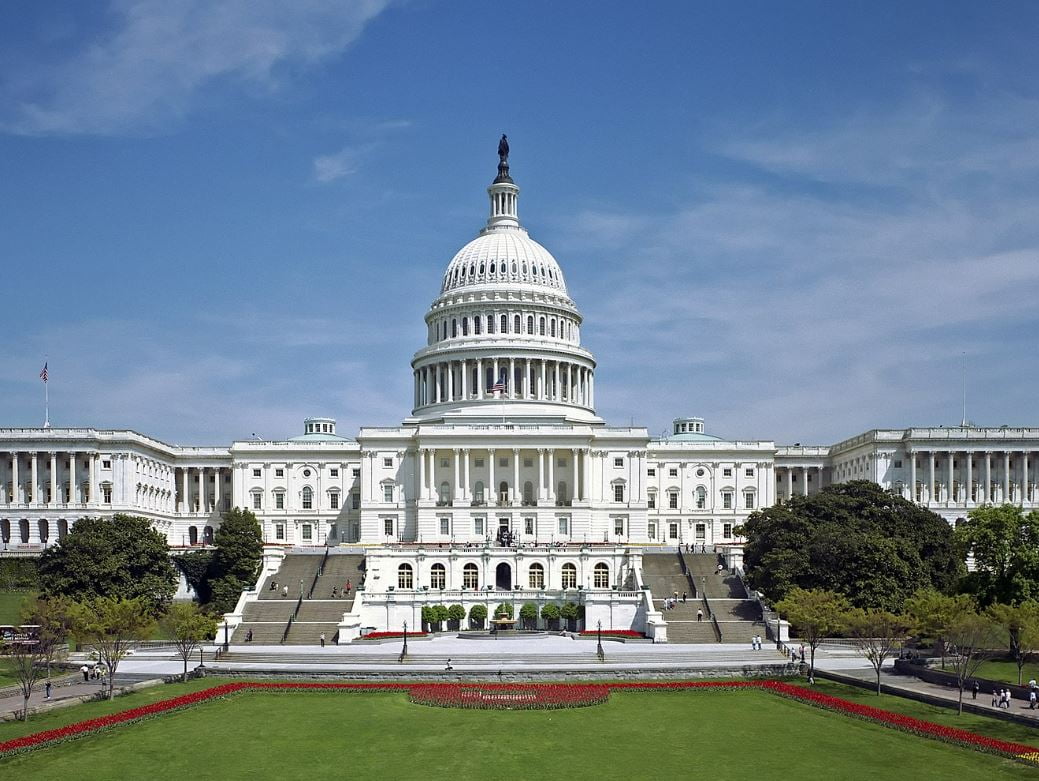On Tuesday August 9, in a Whitehouse Rose Garden ceremony, President Joe Biden will sign the CHIPS and Science Act of 2022 into law.
In addition to the Chips for America Fund (US$52.7 billion), the CHIPS and Science Act will authorise a five-year US$169.9 billion (A$245 billion) Research and Innovation Initiative – a US$82.5 billion increase over the current baseline.
In dollar terms, this is the biggest five-year investment in public R&D in United States history.
The R&D investment is intended to grow both curiosity-driven and translational research, ensuring both the creation of new ideas and the ability of those ideas to create new innovations, products, companies, and jobs in the United States.
It will also build new technology hubs across the country, increasing the participation of underrepresented populations and geographies in innovation, and combat the illicit foreign absorption or theft of US research products.

The investments are seen as strategic steps to regaining U.S. strength and reducing long-term supply chain vulnerabilities in critical areas such as advanced manufacturing, next-generation communications, computer hardware, and pharmaceuticals.
The Research and Innovation Investment will comprise four principal sets of initiatives:
The first initiative includes US$81 billion for the National Science Foundation, doubling its budget. This includes US$20 billion that will support a new Directorate for Technology, Innovation and Partnerships (TIP), which aims to accelerate the processes for bringing technologies such as artificial intelligence and quantum computing from the lab to market.
This marks a major commitment to applied science for an agency that has historically focused on basic science.
The remaining US$61 billion will support NSF’s core activities in growing basic research and funding science education. A focus will be on building research capacity in institutions that primarily serve students underrepresented in science and scaling up investments in institutions in states and territories that receive less research funding.
The second initiative includes $67.9 billion for the Department of Energy, covering the DOE Office and Science. The funding will support areas of physical sciences – such as fusion and nuclear physics in national laboratories, universities and private companies. The distribution of funding will cover colleges and universities currently receiving minimal federal funding.
The third area includes $11 billion for the Department of Commerce to create 20 geographically distributed “regional technology hubs”. These hubs will focus on technology development, job creation, and expanding US innovation capacity.
This initiative will also establish the “Recompete Pilot Program” to support persistently distressed communities with economic development activities.
The fourth initiative includes $10 billion for the National Institute of Standards and Technology, covering NIST Research in critical research and standards for the “industries of the future”, including quantum information science, artificial intelligence, cybersecurity, advanced communications technologies, and semiconductors.
Support will also be provided to Manufacturing USA and extending the Manufacturing Extension Partnership ($829 million total.)
Funding for NASA is also included in the Act, which also includes an authorisation to establish a Moon to Mars Office.
The allocations to specific programs within these agencies are specified at a very high level of detail across the 1034 pages of the Act.
By comparison, the current $12 billion Australian public R&D investment commitment is distributed across six action areas:
- Research and Development Tax Incentive: $2.9 billion (26 per cent of the total)
- Department of Education Programs, including the Research Training Program, the Research Support Program, and NCRIS: $2.5 billion (22.1 per cent of the total)
- Department of Industry Programs, including AusIndustry, CRCs, Geoscience Australia: $0.7 billion (6.1 per cent of the tota;)
- The Research Investment Councils (ARC, NHMRC, government contribution to RDCs) for nationally competitive research grants: $2.0 billion (18.0 per cent of total)
- Publicly Funded Research organisations (CSIRO, DST, ANSTO): $1.6 billion (14.7 per cent of total)
- Statutory Funding, including the MRFF, ARENA, and ACIAR: $1.3 billion (11.4 per cent of total)
An increase in line with the announced US R&D investment in Australia would lift public R&D investment from $12 billion to $18 billion over five years.
It is opportune now to think about how a substantial lift in Australia’s public R&D would be administered.
Advocating for more money, and perhaps securing it, is only the first part of the equation.
Implementation and execution would mean deciding on priorities, designing new programs or extensions of current ones, or creating new institutional arrangements entirely.
In thinking about the implementation and execution of the hypothetical funding increase, the following questions come to mind:
- Should all six action areas receive the same proportionate increase? This would mean increasing the R&D Tax Incentive by $1.4 billion, for example.
- How would allocations to agencies with the action areas be decided?
- What should be the balance of allocations between action areas? For example, between the Research Investment Councils (that would flow through to universities and the Medical Research Institutes), the Departments of Education and Industry programs, and the public research agencies—particularly CSIRO.
- Should there be new institutions like the US proposed Technology and Innovation Partnerships Directorate and the manufacturing research institutes with expanded capacity for education and workforce development?
Australia’s new Federal Government has committed to a $15 billion National Reconstruction Fund. So far, $4.5 billion has been earmarked for three R&D Initiatives – the Advanced Manufacturing Fund ($1.5 billion); the Critical Technologies Fund ($1.5 billion) presumably, artificial intelligence, quantum computing, advanced manufacturing, 6G communications, energy, and materials science; and a Medical technologies Fund
If these funds represent new money, that will amount to an increase of almost 40 per cent over current public research funding.
In this context, the allocation questions raised above are apposite. This means deciding on the extent to which the new funds should be absorbed within existing institutional arrangements, or whether the current implementation infrastructure be adapted, modified, or renewed to ensure the maximum effectiveness of the initiatives.
It is also possible that new implementation arrangements could be introduced to add to the already overloaded administrative apparatus for investment in Federal public R&D. In this case, what administrative entities would be disbanded?
With the $4.5 billion earmarked for new R&D initiatives, we have an emerging strategy, but we must ensure that the governance arrangements, organisation structures, rules, systems, and staffing arrangements are in place to support implementation.
Australia has a track record of good strategies being foiled through poor execution.
Dr John Howard is a visiting Professor at UTS Business School and Managing Director of Howard Partners, a specialist public policy advisory firm.
Do you know more? Contact James Riley via Email.

